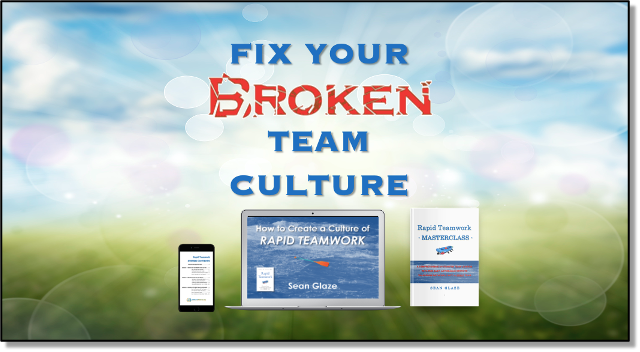 You see it every day…
You see it every day…
Teammates get distracted constantly by the barrage of noise around them – and that means they do not pay as much attention to YOUR emails, conversations, texts, or smoke signals…
It isn’t just millennials on your team who are distracted anymore. It’s truly everyone.
Yeah – even the old guy who has his treasured 8-track collection in his office bookshelf ; )
And when your teammates get distracted, your productivity and results ultimately suffer.
So, if you want to get and keep their attention you NEED to take note of these 2 unexpected suggestions to improve your impact.
Instead of yelling or getting frustrated or cursing the new reality of constant bells, beeps, social media updates, emails, calls, or music – choose to take action on one or both of these ways to earn their attention!
1. Ask QUESTIONS instead of telling them stuff!
Questions are engaging.
My friend Bob Teide shares a great deal about this on his blog, Leading With Questions – and he has been incredibly successful in sharing the impact and influence of questions.
Like Bob, Will Wise and Chad Little field also emphasize the influence you can have when you shift your focus from telling to asking in their book, “Ask Powerful Questions.”
And Socrates made the use of questions pretty famous and used them to make people think rather than telling them what to think (yes, he was eventually sentenced to death by hemlock, but your questions will probably not result in quite so negative a response).
The problem is that as teammates or team leaders we often take the easy road of TELLING rather than of turning those statements around to invite ENGAGING CONVERSATIONS.
This happened to me as a coach when I had 1-1 meetings early in my career.
I would say everything and they would sit – and there was very little actual dialogue… so the players I was talking at felt misunderstood or underappreciated.
Don’t let that happen to YOU!
Turn your statements into QUESTIONS.
Make your meetings and conversations a game. Whoever talks the most loses (and you want to WIN with questions!)
Before you meet with your people in your weekly or monthly 1-1 sessions, take the time to turn your talking points into questions – ASSC for their ideas and perspective!
Yes – ASSC is spelled correctly – it is an acronym!
ALWAYS STAY SINCERELY CURIOUS
That is what leads to the best questions!
2. Make WE the clear focus of your message!
You’ve likely heard it before, but the most popular radio station in the world would be WIFM – because your people always want to know “What’s in it for ME?”
But YOU and ME still separated people from the compelling common goal and the sense of camaraderie that GREAT Teams enjoy sharing as part of their identity.
Put yourself in the other person’s position.
Ask yourself, what is important to them?
It sounds great – and truly DOES WORK. This will make you seem more interesting and the people you speak with will be glad to have gotten the attention.
But it doesn’t work so well for BUILDING TEAMWORK.
Instead of asking for what is important to them individually, find ways to CONNECT them to the TEAM dynamic and weave your conversations and emails and meetings into opportunities to build a SHARED sense of PURPOSE.
Don’t ask them Ask for “advice,” people see themselves as partners. And advice versus feedback significantly increases both the amount and quality of responses.
Watch your pronouns. First, don’t use the words ME or I (those are deadly and narcissistic and often lead to adopting cats so your one-room apartment doesn’t feel so lonely).
And don’t overly use the words YOU or YOUR (those direct the spotlight at another individual and proved a false feeling of isolation and separateness).
Instead, find ways to use the words US and WE and OUR… like this:
“Hi Leslie!
WE have been working together for a few months now and I love how OUR strengths compliment each other.
SINCE WE ARE BOTH going to be impacted by the results this project, I wondered if you had any ideas about how WE could take care of the issue of ______ that is keeping US from getting it done?”
Even though it may be a cheesy and simple example, it does do the job of illustrating the need to make your comments INCLUSIVE so you build a TEAM IDENTITY instead of allowing people to feel disconnected even when they work near each other.
If you want to earn the attention of your distracted team, you need to connect them to a compelling common goal and you need to engage them by asking for their ideas and perspectives so they feel like part of the solution moving forward.
Groups are people who work in close proximity.
Teams are people who work with a shared mission.
Whether it is through your own individual efforts or through the impact of scheduling of a business teambuilding event, GREAT teams are a symptom of great team leaders who keep their people focused and positive and passionate about working as a TEAM.
If you will use these two unexpected ideas for getting their attention, you will be amazed at how much more productive and connected your people will become!
As I have shared with many audiences and leaders at my events, “ENGAGEMENT is the amount that your people care about the RESULTS they are contributing to create.”
LEADERSHIP begins with clarifying WHY everyone is there and what the compelling common goal is that everyone is working toward. When people don’t have a goal to focus on (or to refocus on), it becomes more likely that their attention will be distracted by whatever other shiny object is available.
If you want to ensure that your people KNOW THEIR WHY – in addition to the other elements that make up the FIVE essential ingredients of leading a team – consider investing in the Rapid Teamwork Masterclass on Building Team Culture.
It is a comprehensive step-by-step system of video lessons and activities for team leaders to implement in order to build a more positive and productive, team culture!
Take a step to improve your team – maximize the positive impact you have on their attention (and EFFORTS!) and learn how to “fix your broken team culture” here. (Yes, it’s completely free)

